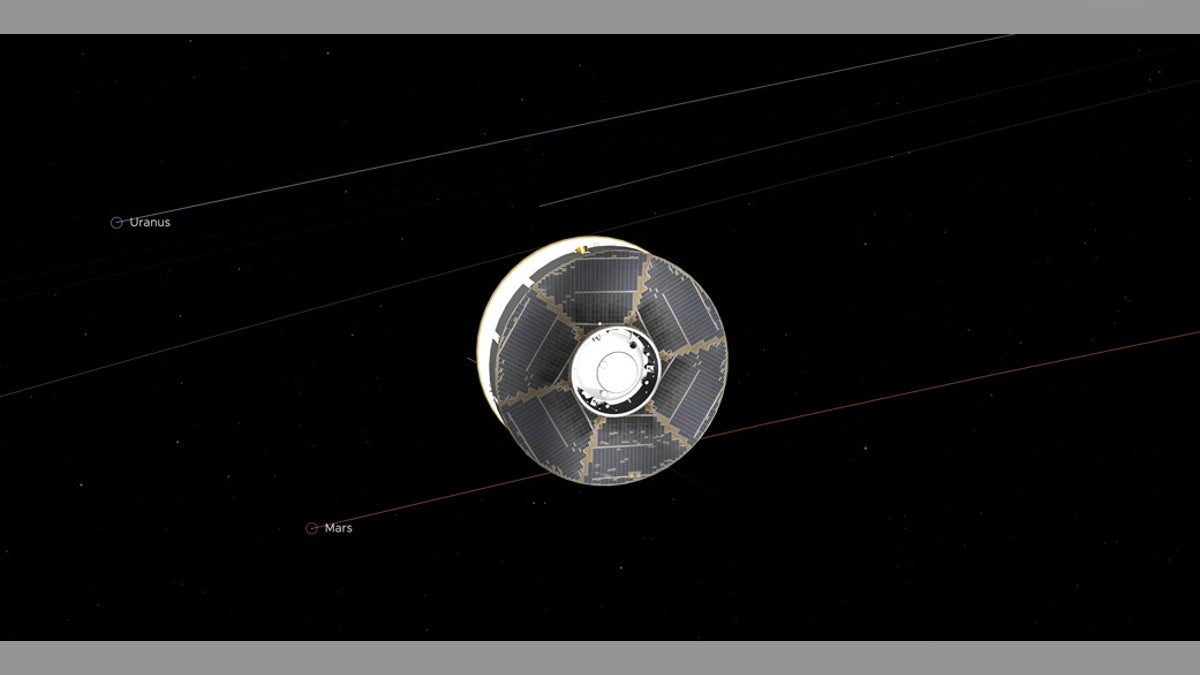NASA administrator on Perseverance Rover's mission to Mars, search for signs of ancient life
The rover launched into space atop a United Launch Alliance Atlas V rocket from Cape Canaveral Air Force Station in Florida; insight from NASA Administrator Jim Bridenstine.
After launching on July 30 to head to the Red Planet, NASA's Perseverance rover is halfway to Mars, the space agency announced.
Late Tuesday, Julie Kangas, a navigator working on the Perseverance rover mission at NASA's Jet Propulsion Laboratory, said the rover had logged 146.3 million miles as of 1:40 p.m. PST, with another 146.3 million miles to go.
"While I don't think there will be cake, especially since most of us are working from home, it's still a pretty neat milestone," Kangas said in a statement. "Next stop, Jezero Crater."

This illustration of the Mars 2020 spacecraft in interplanetary space was generated using imagery from NASA's Eyes on the Solar System. The image is from the mission's midway point between Earth and Mars. (NASA/JPL-Caltech)
NASA has also posted a real-time look to see where the rover is at any time.
HOW IS THE MARS PERSEVERANCE ROVER GETTING TO THE RED PLANET?
Though Perseverance has traveled half the distance to Mars, it is not actually halfway between the two planets, Kangas added, as the sun's gravitational influence impacts the rover's curved trajectory.
"In straight-line distance, Earth is 26.6 million miles [42.7 million kilometers] behind Perseverance and Mars is 17.9 million miles [28.8 million kilometers] in front," Kangas explained.
NASA'S PERSEVERANCE ROVER CARRYING 'SPECIAL' HIDDEN MESSAGE TO MARS
The $2.1 billion rover will also come with the first helicopter, known as Ingenuity, that will let researchers understand the viability and potential of heavier-than-air vehicles on the Red Planet. In August, NASA powered up the six lithium-ion batteries on Ingenuity.
Once Perseverance lands on Mars at the Jezero Crater on Feb. 18, 2021, it will join the still functioning Curiosity rover and the now-deceased Opportunity rover on the Red Planet.
The mission’s duration on the Red Planet’s surface is at least one Martian year or about 687 days. While there, it will perform a number of tasks, including looking for fossilized evidence of extraterrestrial life.
NASA’s long-term goal is to send a manned mission to Mars in the 2030s.
CLICK HERE TO GET THE FOX NEWS APP
Fox News' James Rogers contributed to this story.






















